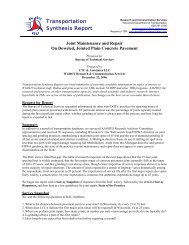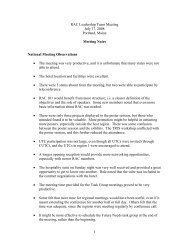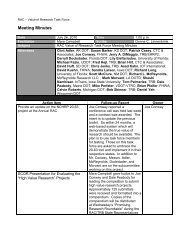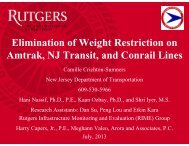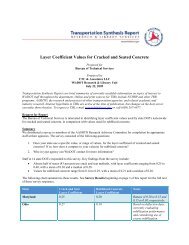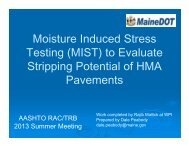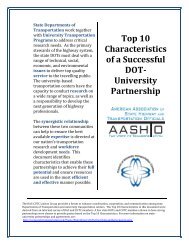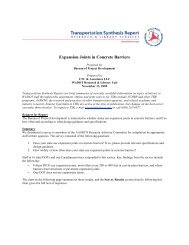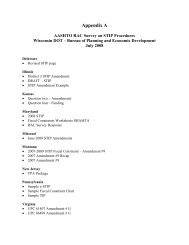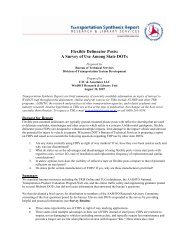PART IV: Summary of Comments - SCOR/RAC
PART IV: Summary of Comments - SCOR/RAC
PART IV: Summary of Comments - SCOR/RAC
You also want an ePaper? Increase the reach of your titles
YUMPU automatically turns print PDFs into web optimized ePapers that Google loves.
<strong>PART</strong> <strong>IV</strong>: <strong>Summary</strong> <strong>of</strong> <strong>Comments</strong>17-May-10Reviewer <strong>Comments</strong> Distribution <strong>of</strong> Ratings■ Much has been learned since research began for the current manual and an update would be useful.■ There is significant need.■ [Rating: 4] Update <strong>of</strong> the Manual is highly recommended. If the Manual did not already exist, then a “5” would mostcertainly be warranted. The Manual is the definitive reference and needs to be kept current. FYI, I understand the Manualhas been translated into Chinese. (I’ve seen that version)Research Advisory Committee■ It's been 15 years since the Access Management Manual was first initiated. During this timeframe, the practice <strong>of</strong> accessmanagement has continued to advance and it is important to keep the manual up to date. The manual is widely used, esp.as DOTs (state and local) are increasingly emphasizing improving safety and getting more out <strong>of</strong> the current roadwaysystem (access management can help improve both). NCDOT is employing many <strong>of</strong> the techniques described in themanual and has continued to receive requests for the manual in recent years. This is the number one priority <strong>of</strong> the TRBAccess Management Committee. The Committee voted to submit only one NCHRP research project in September 2009due to the importance <strong>of</strong> updating the manual.■ Can use updated research to improve the Manual? Low cost for good benefit.■ There is a real value in incorporating the research <strong>of</strong> the last 15 years into a current version <strong>of</strong> the Access ManagementManual. This is definitely beneficial nationwide. Filling in the current gaps in the Access Management Manual wouldprovide a valuable tool to engineers planning and designing for improvements to the transportation system, resulting infuture benefits justifying the cost.■ Expanded research info on this topic would help MassDOT to improve safety and reduce congestion.■ SHA Submission (Operations)■ Yes, this is a current problem that needs researching. This will keep all the states up to date and informed on newprocedures. This is <strong>of</strong> nationwide interest.■ Since very few facilities have been built using the recommendations in the Manual, more time is needed to allowadditional projects to completed before the Manual is updated.Other■ [Rating: 3] It is time for an update to this manual.■ Generally related to Reliability and CapacityItem #19:D-01Self-Consolidating Concrete for Cast-in-place ConcreteBridges and Tunnels(17)(46)NR 0 1 2 3 4 5<strong>SCOR</strong> 1 5 7 4<strong>RAC</strong> 1 1 1 5 13 18 10Standing Committee on Research■ SCC in CIP applications are not commonly used in DOT’s. There are questions that need to be answered: stability <strong>of</strong> themixture, air void parameters and the stability <strong>of</strong> the air void system, form pressures, shrinkage and creep in SCC mixtureswhich generally use small aggregates.■ Much information is already available on this topic.■ This proposal would require industry buy-in for manufacture and delivery <strong>of</strong> Self-Consolidating Concrete (SCC). DOTbuy-in will be necessary for allowing trial use on permanent elements. There is a need to address constructability relatedissues at a project level while there is little need to address design related issues.■ SCC is becoming more widely used in cast-in-place concrete applications. The research will provide further guidance on<strong>IV</strong>-9



